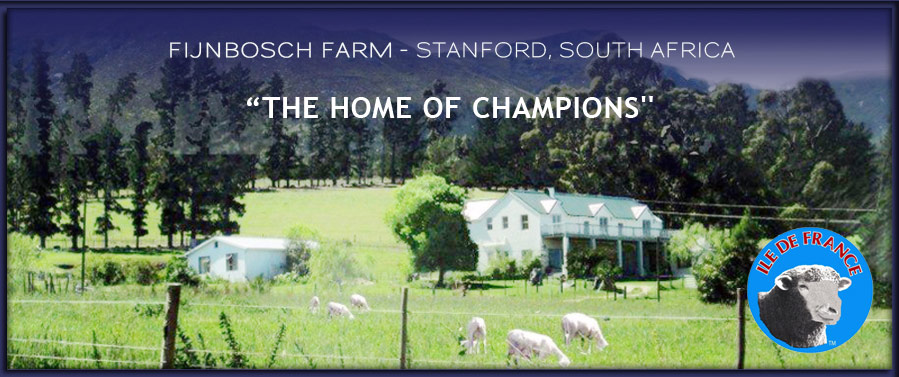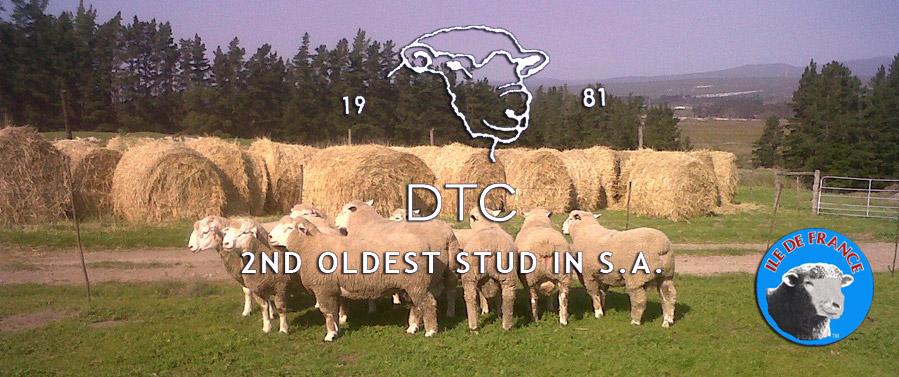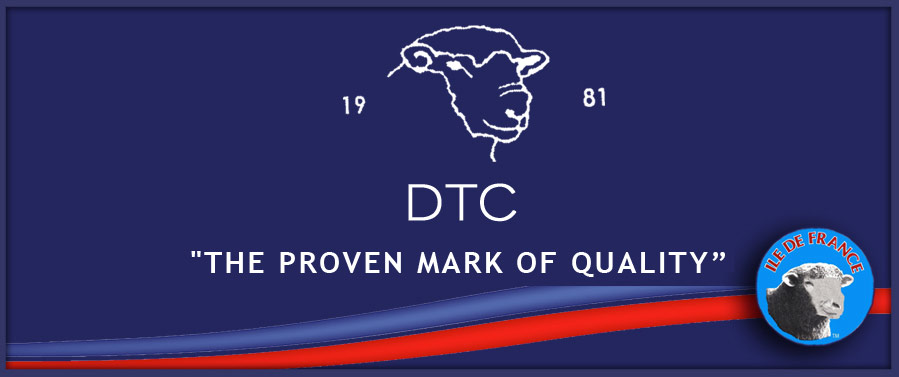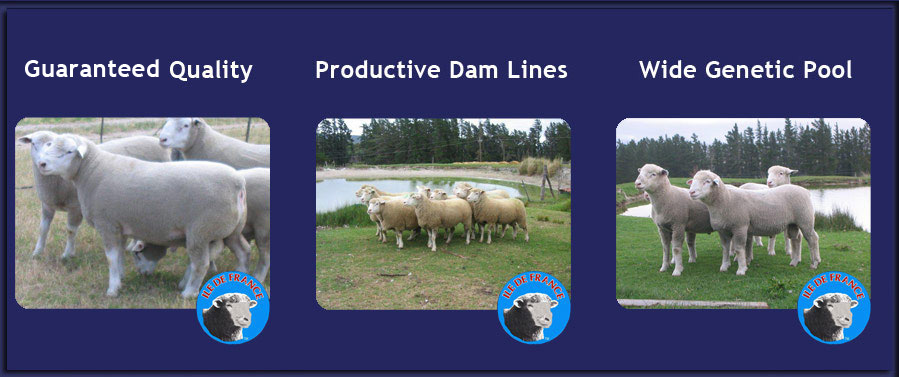BREEDING - HALL OF FAME
origins
So how did Denvor Stud originate?
A concentrated study [between 1976 and 1981] of the existing Ile de France sheep in SA was done and it was without doubt that the original and first sheep imported to SA in 1973 by Dr George Hunter [Baraboo Stud - Stellenbosch] and Dr Herman Reinach [Circum Stud; - Ceres] were the sheep to go forward with.

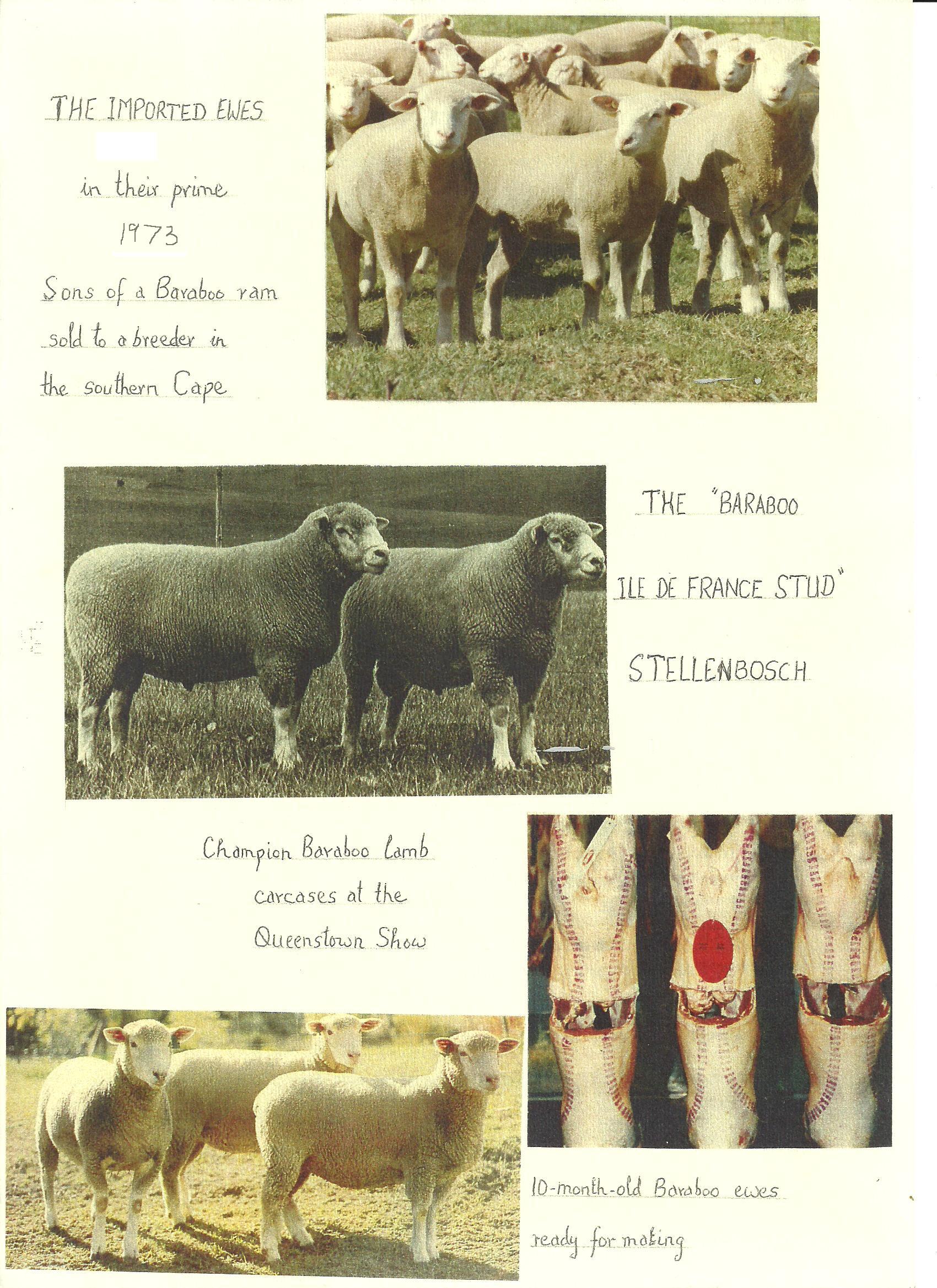
It also soon became evident that certain bloodlines within these 2 studs had - and continue to have - a highly positive influence on the future of the IDF breed in SA. We believe that these original imports were the best IDF brought into this country.
The following imported rams played a huge role - in the Circum [HR] stud: FF 2156 and BJ 2474 and, in the Baraboo [BB] stud: BL 1259; and LS 1301 – and were of the highest quality
But like in any stud, females play an important role in breeding.
The following imported ewes left a legacy within the IDF in SA:
Circum (click to view):
- CA 2193 [dam of ram HRS 19 -Donkiekop], CA 2182 [dam of HRS 35 ], CA 2545 [dam of HRS 42] and R 2623 [dam of ram HR T12].
The Baraboo (click to view):
- CA 2489 [221] – dam of ewe BB S407 and many show champions, FF 2504 [224] – dam of ram BB T514 and many show champions, LB 2408 [210] dam of ram BB S408 – sire of BB T514, and LB 2739 [216] – dam of future champions.
Their subsequent progeny were of the highest quality and so when Denvor stud started in 1981 these bloodlines were the basis of the path forward.
Circum had the more robust, short, stocky and early maturing animal - and Baraboo had the longer, finer, late maturing animal.
A combination of these bloodlines was the way forward – as both herds had their faults,ie:
TYPICAL CIRCUM SHEEP

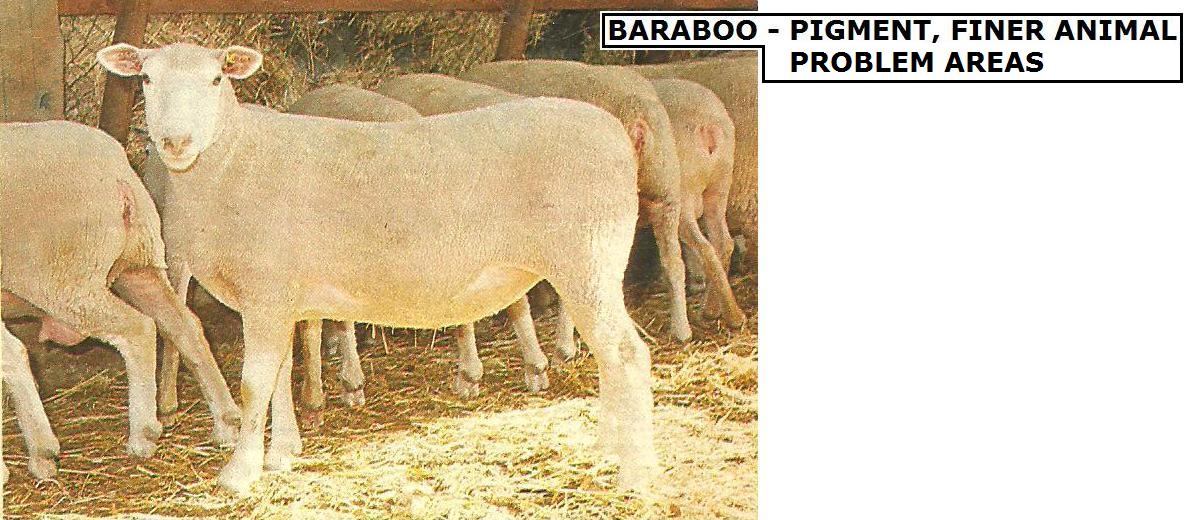
Denvor Stud [DTC] wanted a long animal with depth, and with good legs:
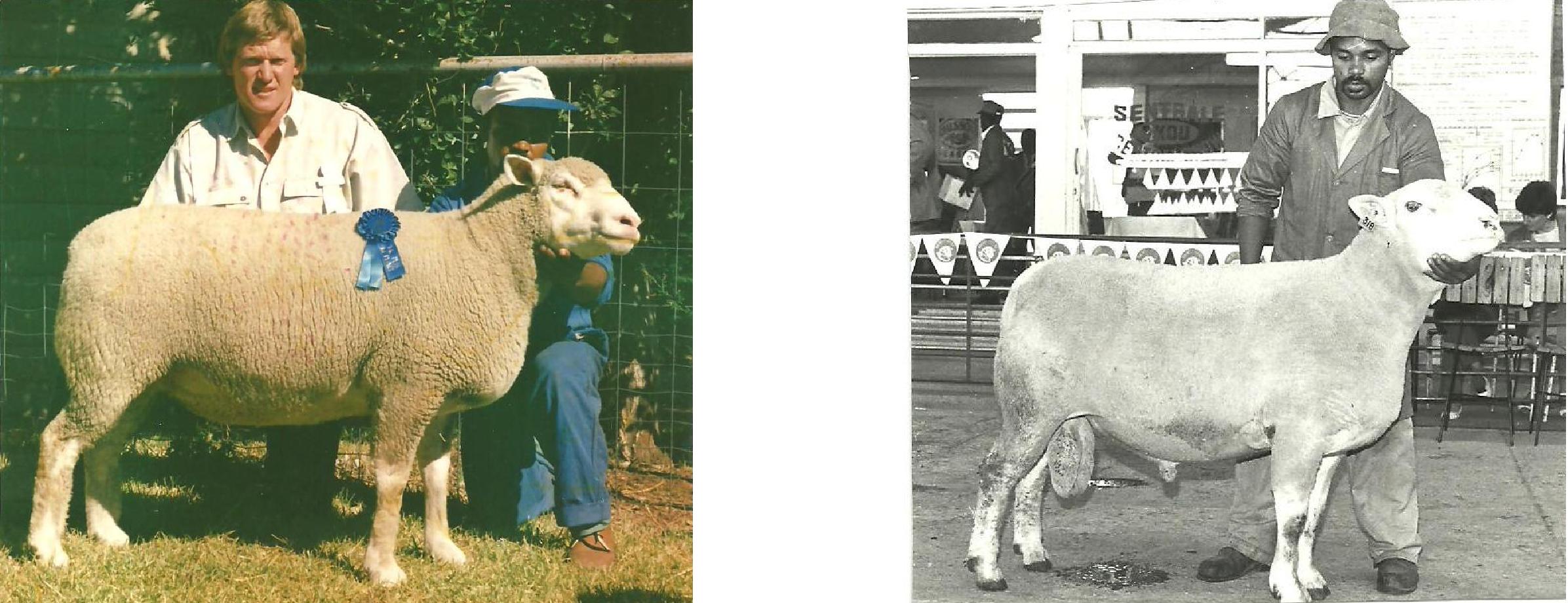
The results of our breeding policy were very encouraging and it was soon evident as subsequent show results had indicated – that we were on the right track.
To attain our ultimate objective, all animals bought in were a cross of these 2 breeders bloodlines and / or pure animals from each, -- but more specifically the related animals mentioned above.
Mr Deon Doman, of Deonica Stud, and I spent many hours putting the jigsaw puzzle together as we had the same vision. To view more on Deonica Stud click below:
Deonica 1 Deonica 2 Deonica 3 Deonica 4
Herein a pedigree of the first sheep brought in;
The first ram - HU Y08
The first ewes - BB Z010
and BB Y952
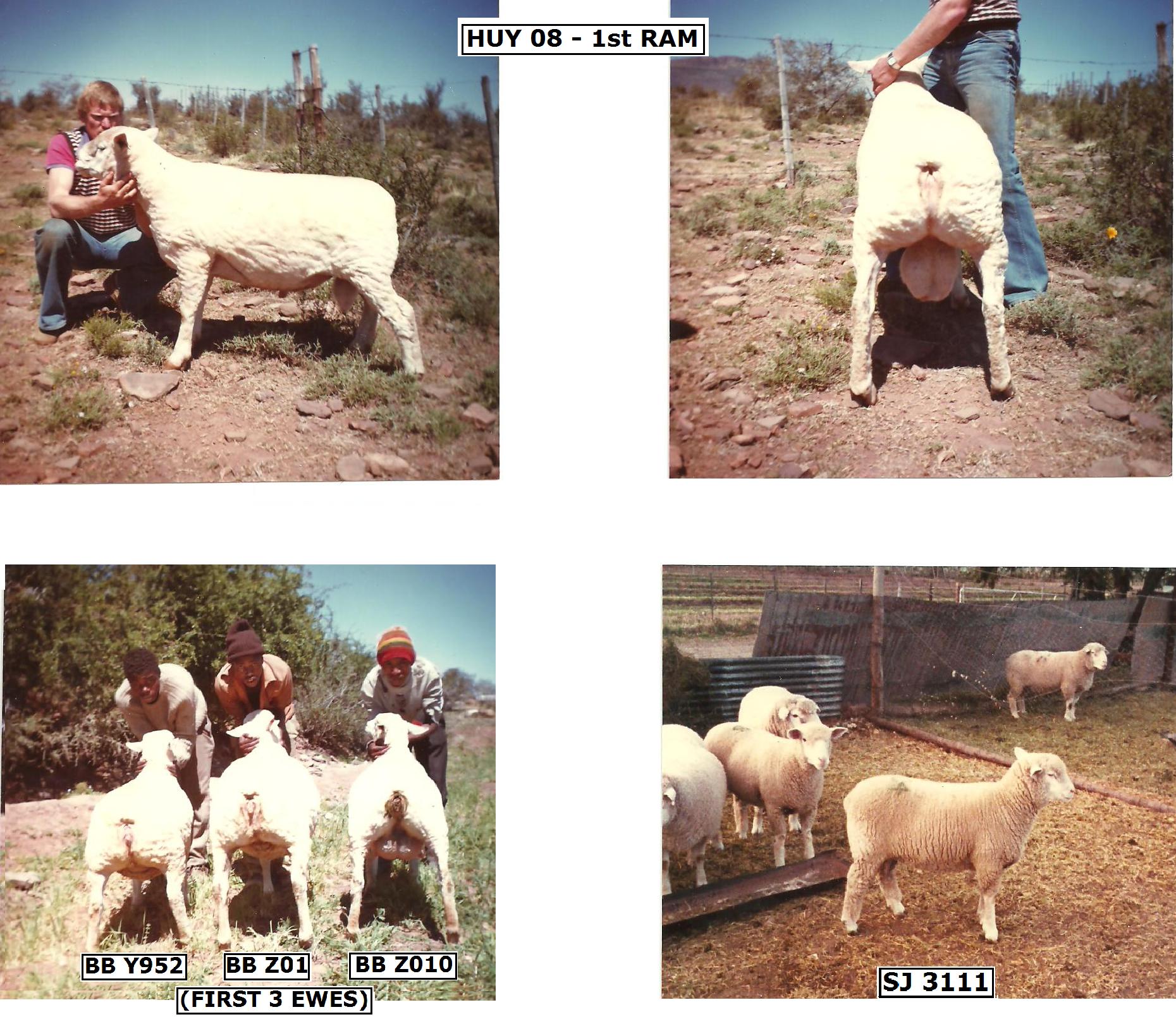
Notice the combination of bloodlines:
BB T514 was the best ram I ever saw - see pedigree – huge ,deep and long
BB U671 [sire BB S408 and dam BB S407 ] was a ram used throughout SA with a lot of success, as was his son BB Y959 [sire BBU 671 and dam HRS 42]
HR S19 bred many good ewes – as did HR T12 – who bred outstanding ewes – but no ram of note.
BB U671 and HR T12 were a great combination so we tried to acquire this bloodline as well.
Another breeder from Bredasdorp had huge success with this combination and won many shows - Mr Boy Human (click to view)
We were fortunate enough to attend a sale where the right ewe came up – an inbred T12 daughter – SJ 3111
I had the rams to use on her – namely BB W810 [son of ram BB U671] and BB W83 [son of ewe BB S407] – and I knew something would click. It did – a daughter [DTC 426] from BB W810 clicked and was the ideal base. Every lamb produced by this ewe was ultimately a show champion.
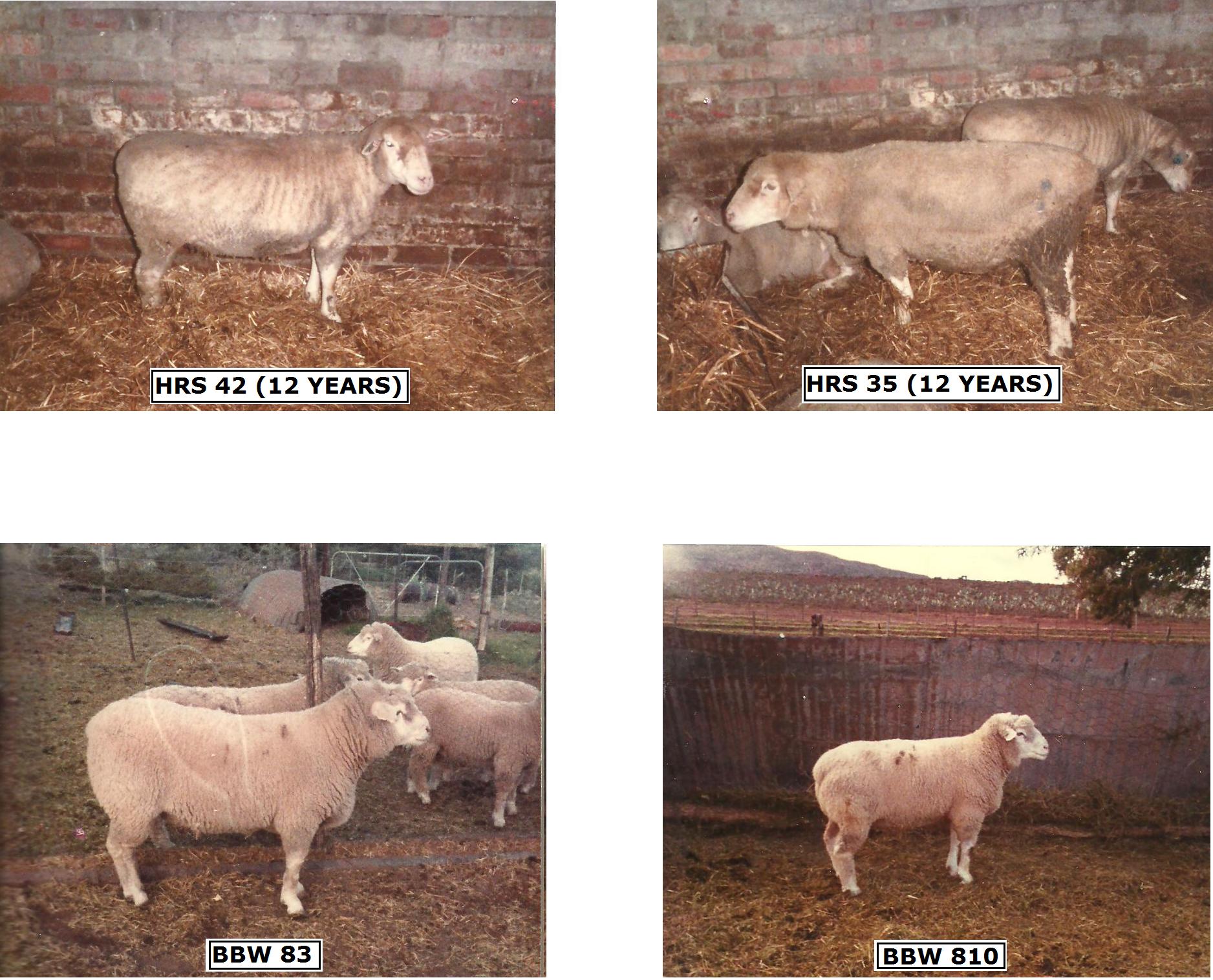
Length of body to me was an obsession and therefore I tried everything to go back to BB T514 sire – namely BB S408
Baraboo eventually came up with the right combination, and BB 8118 was bred – a very long sheep – which I dare say was the foundation line of the long sheep in SA.
Although lacking in a bit of pigment this ram had everything – and bred many champions:
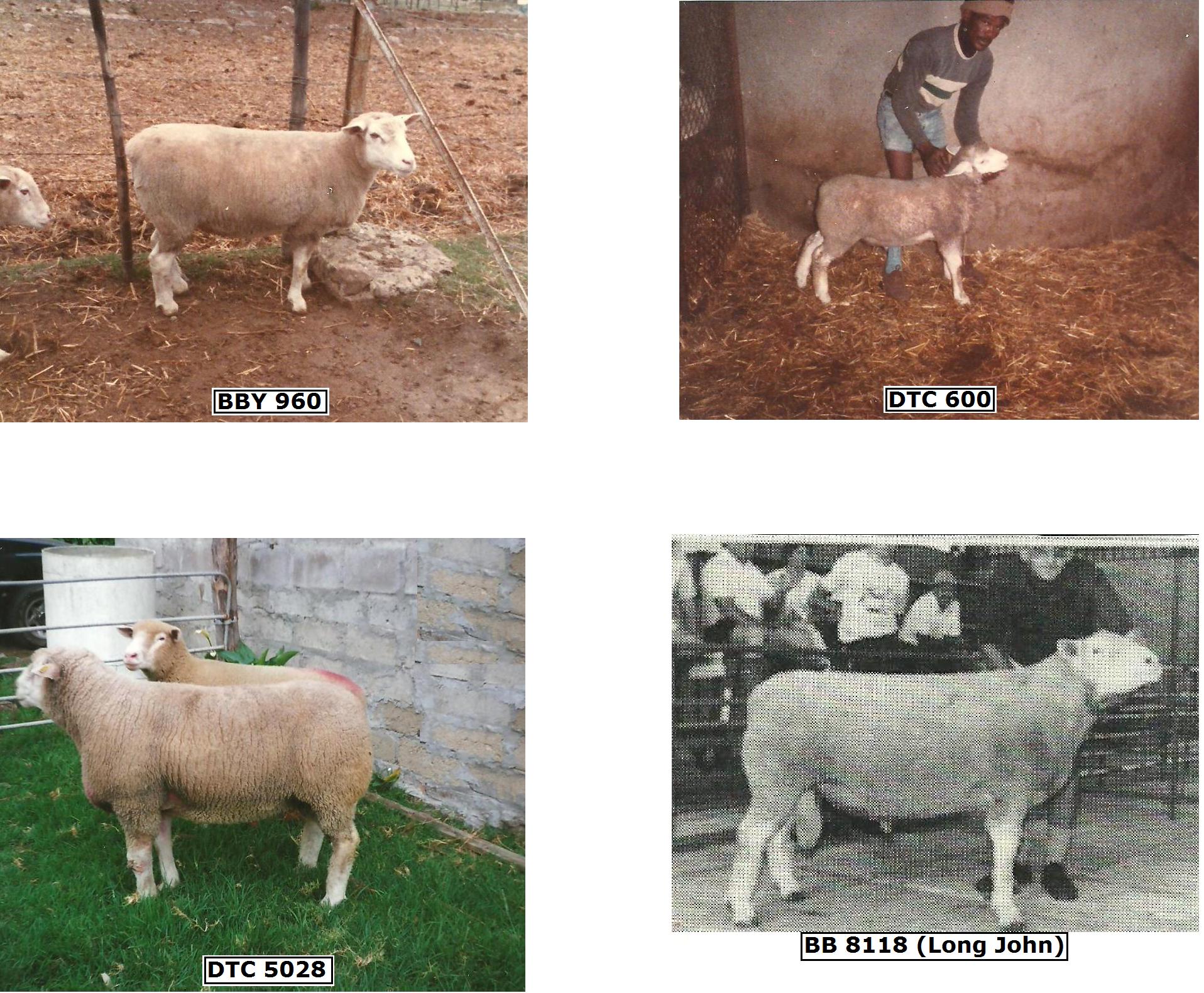
I was fortunate in being able to mate BB 8118 to a very good ewe: BB Y960 [BB W810 and HR S42 and full sister to BB Y959] which resulted in DTC 600 – a fantastic young ram with all the credentials. Unfortunately he died at an early age but we managed to get enough progeny from him to lay another foundation in Denvor Stud.
He produced a ewe DTC 7128 [dam DTC 426] who produced DTC 2030.
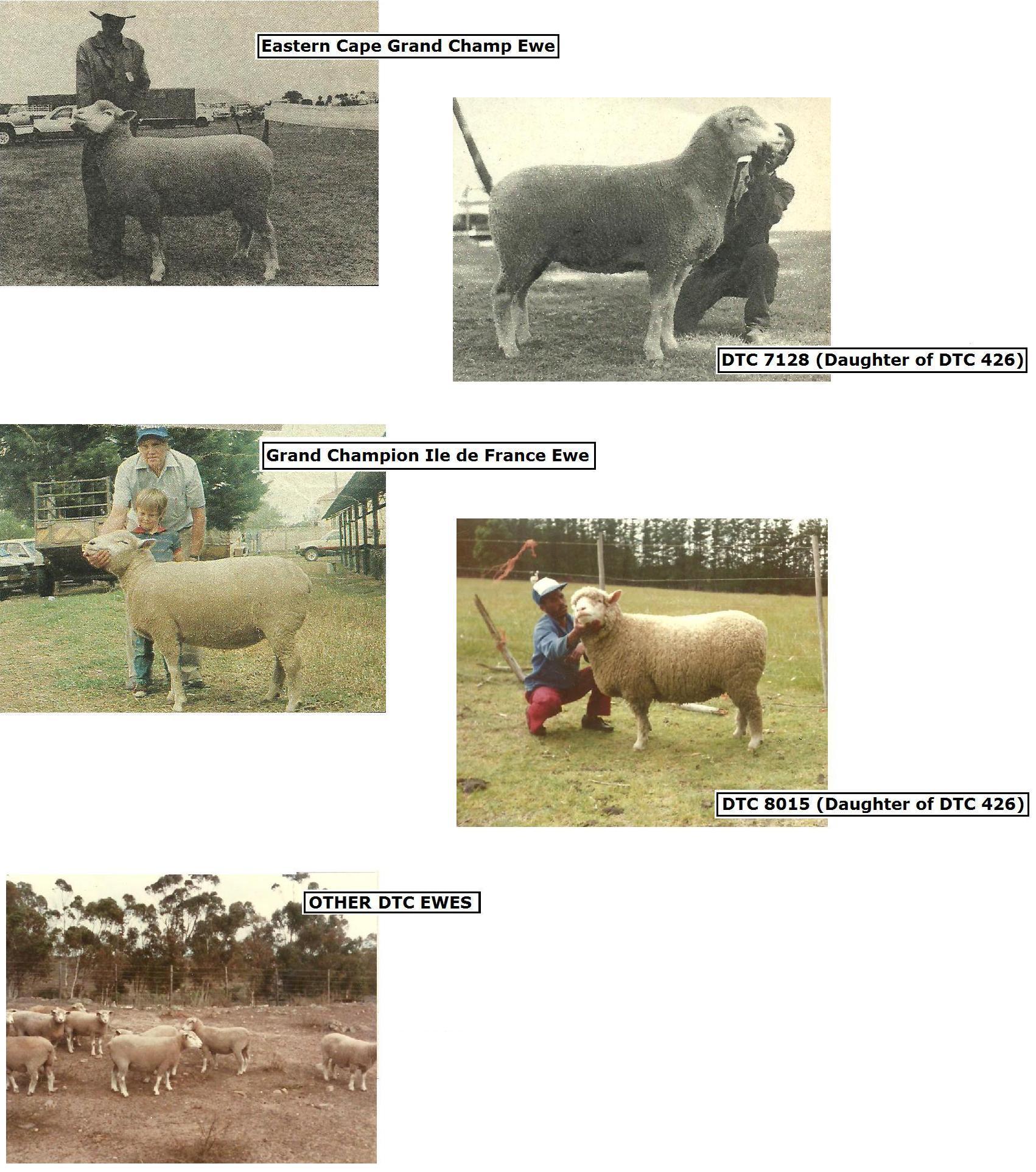
DTC 2030 was SA champion ewe [1996] and her one son DTC 5002 was the SA Junior Champion and the other, DTC 3098 was the SA champion ram – at the same show!!!
DTC 3098 also produced DTC 5028 that became the SA senior champion
This combination also eventually ended giving another SA champion ewe – namely – DTC 5084– who in her own right has bred some tremendous progeny.
The Studs policy of a 3 ewe flock cyclical breeding system was now able to operate as all the required genes were acquired to go forward as a ‘closed‘ flock.
It was also apparent that there were certain productive ewes – quality and quantity – that could be identified within the herd – which obviously were the ewes that potential stud rams would be bred from.-The following are fine examples of productive ewes: (click to view)
DTC 4125
DTC 4124
DTC 5084
DTC 7007
DTC 2030
Their progeny all had impressive performance indices.
A way had to be found to capitalize on the productivity of these ewes. Instead of only relying on normal conception – we now flush [EMBRYO’S] these animals with the result that we can get as many lambs in one flush as in her lifetimes normal production.
One particular ewe gave 30 embryos ewes – of which 19 were conceived.
This gives one a quicker high intensity improvement of selection for quality and quantity, something DENVOR STUD does every year. This has enabled the stud to have 6 progeny of DTC 5084 – SA CHAMPION EWE 2009 - in the herd and still able to sell her at R11000
This also assists the Stud in selecting the ideal breeding animals for embryo export – to Australia and Brazil.

